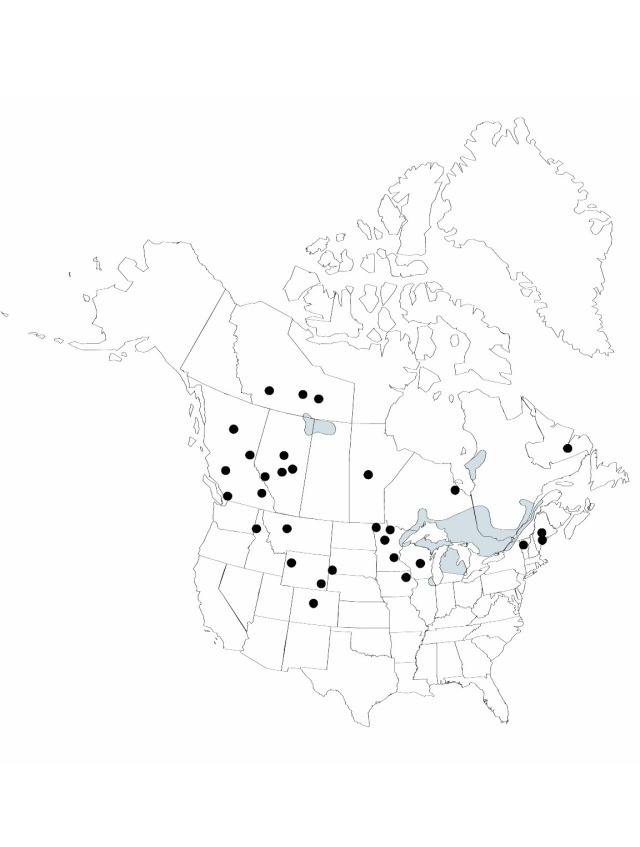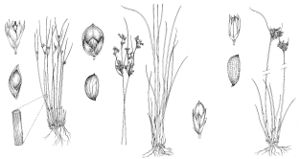Juncus vaseyi
2:448. 1866.
Herbs, perennial, tufted, 2–7 dm. Rhizomes densely branching. Culms 1–15(–25). Cataphylls 1–2(–3). Leaves basal, (1–)2–3; auricles 0.2–0.4(–0.6) mm, scarious, rarely ± leathery; blade green, nearly terete, 10–30 cm × 0.5–1 mm, margins entire. Inflorescences terminal, 5–15(–30)-flowered, congested or not, 1–5 cm; primary bract usually much shorter than inflorescence. Flowers: bracteoles 2; tepals greenish to tan, lanceolate or widely so, 3.3–4.4 mm; outer and inner series nearly equal, apex acuminate; stamens 6, filaments 0.5–0.9 mm, anthers 0.4–0.8 mm; style 0.1–0.2 mm. Capsules golden tan or light brown, 3-locular, ellipsoid, (3.3–)3.8–4.7 × (1.1–)1.3–1.7 mm. Seeds tan, ellipsoid to lunate, body (0.52–)5.5–0.65(–0.7) mm, tails 0.2–0.5 mm. 2n = ca. 80.
Phenology: Flowering and fruiting summer–early fall.
Habitat: Permanently moist, usually exposed areas including wet meadows, raised sites or margins of bogs, or depressions along sandy lakeshores
Elevation: 200–1500 m
Distribution

Alta., B.C., Man., N.B., Nfld. and Labr. (Labr.), N.W.T., N.S., Ont., Que., Sask., Colo., Idaho, Ill., Iowa, Maine, Mich., Minn., Mont., N.Dak., N.Y., S.Dak., Vt., Wis., Wyo.
Discussion
Selected References
None.
